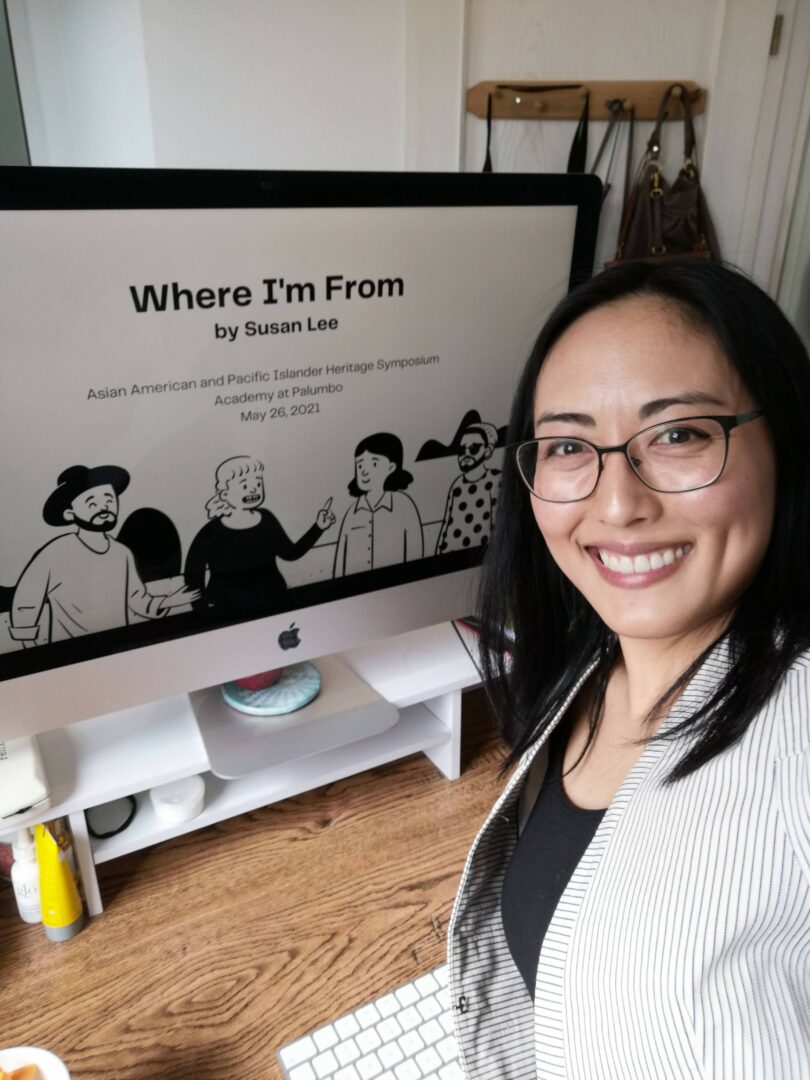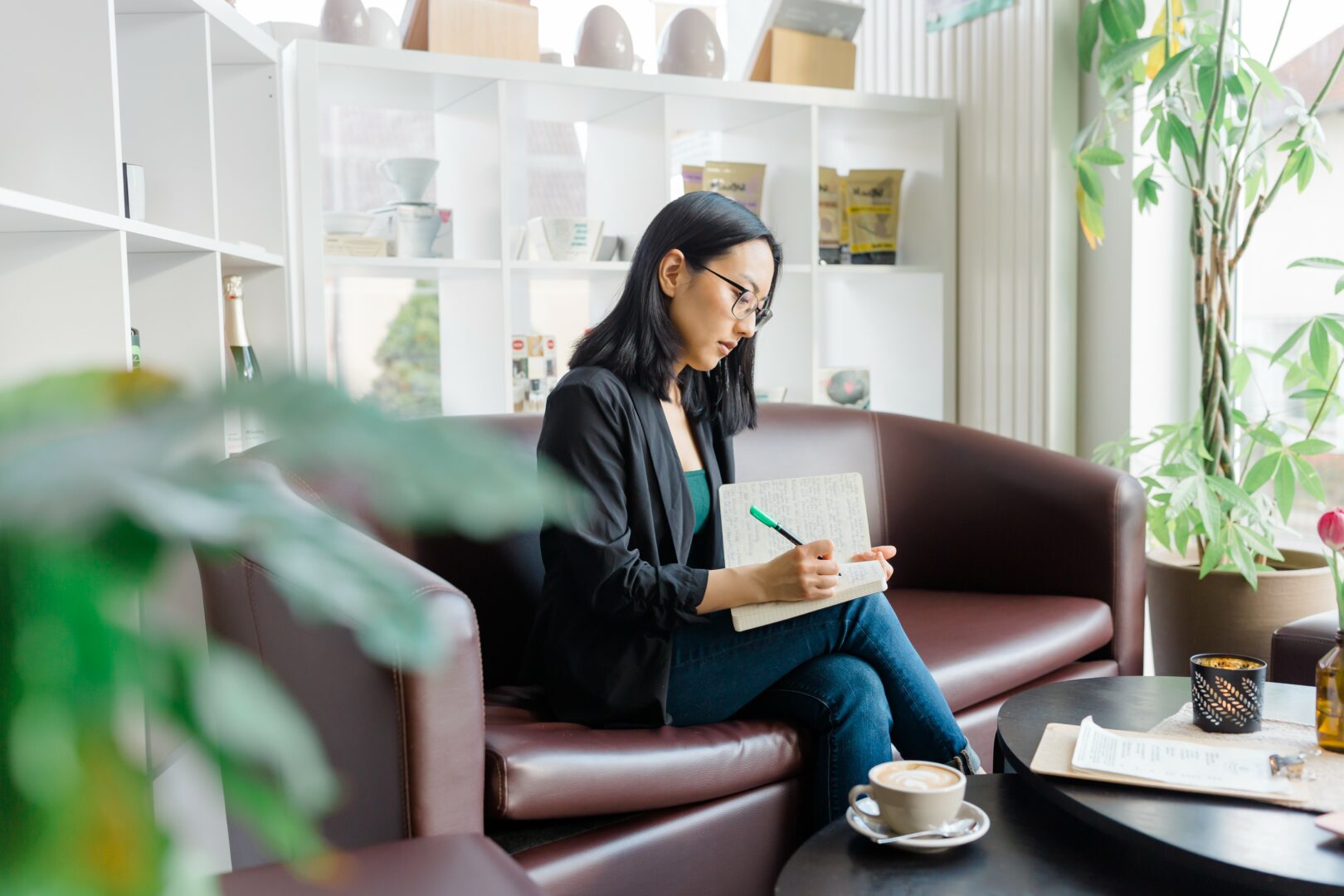We’re excited to introduce you to the always interesting and insightful Susan Lee. We hope you’ll enjoy our conversation with Susan below.
Hi Susan, so excited to have you with us today, particularly to get your insight on a topic that comes up constantly in the community – overcoming creativity blocks. Any thoughts you can share with us?
I’m an unconventional creative. I’m not an artist, I don’t create with my hands, and I have a mathematics background. I refer to myself as a serial pivoter: I’m a teacher by trade but have also worked in nonprofits, consulting, and technology. I love learning, so I have a hard time sticking to one thing.
I’m also married to an active-duty military service member, which means we move around the world every few years. This led me to pivot into remote work, and eventually, I began my entrepreneurial journey as a women’s empowerment coach and content creator to gain more control over my career.
Transitioning from a STEM and project management background to a more creative and entrepreneurial space was unconventional. I didn’t see many people making this kind of shift, and to be honest, I struggled. Now, I try to mentor others who are curious about the creator economy and solopreneurship.
For me, creativity block is really a perfectionism block. As a Type A creative, my brain defaults to planning everything out before I start (which leads to procrastination or not starting at all). Knowing this about myself, I’ve developed systems to break through the block.
My strategies vary depending on the situation. For example, if I’m in a quiet space, I close my eyes and meditate on what I want to create. I let my swirling thoughts settle and see what emerges. Then I write in my journal because writing by hand feels different than typing on a computer. Writing gives me permission to be messy, whereas typing tends to put me in a “professional” mode, which is more prone to creativity blocks.
If I don’t have a quiet space to meditate and need something quickly, I turn to AI tools to generate a first draft. Honestly, I usually don’t like what AI comes up with, but that rough draft helps me break the blank-page barrier. Ironically, seeing what I don’t like pushes me in the direction of what I want to create.
Regardless of which tactic I use to overcome the c̶r̶e̶a̶t̶i̶v̶i̶t̶y̶ perfectionism block, I’m mindful of my energy. If I’m depleted or filled with anxious energy, then I’m unlikely to create something meaningful. I believe that honoring your body and mind is a part of the creative process.

Appreciate the insights and wisdom. Before we dig deeper and ask you about the skills that matter and more, maybe you can tell our readers about yourself?
I’m the daughter of immigrants. I was the good girl, the A-plus student who peaked early in her career and checked off all the boxes. By twenty-six, I was a high school math teacher with a Master’s degree. I bought my first house, paid off my student loans, and was honored at City Hall for my work.
But I was unhappy.
I wondered, “Is this it? And how do I keep this up?”
This was in 2013, a time when no one was really talking about balance or burnout the way they do now.
So I burned everything down.
I quit my job, gave away my belongings, and rented out my house. I bought a ticket to Thailand, went backpacking around Southeast Asia for four months, and ended up taking a full gap year. I had big dreams of finding myself and figuring out what I would do next.
I didn’t find myself in the way I expected, but I learned to trust myself.
I wish I had more support back in 2013. I wish I didn’t feel so guilty about being unhappy. And that’s why I do the work I do.
I help high-performing women in their 30s and 40s, who feel unfulfilled by their “successful” careers, figure out what they truly want so they can live their ideal lifestyle guilt-free while making an impact. Most career advice focuses on the job search, but my clients need support with the soul search. It’s not just about figuring out what you want; it’s about taking action without shame or guilt.
My business primarily runs online because I started it during the COVID-19 pandemic, but I’m excited to share that I’ll be offering more in-person opportunities. My goal for 2025 and 2026 is to host creative retreats around the world. I’ve traveled to over forty countries so far, and hosted retreats at inspirational places like Paris and New York.
We live in a society that highly values individualism, but as a result, our villages are shrinking. What my clients have taught me is that they don’t need more resources—they need more community.

If you had to pick three qualities that are most important to develop, which three would you say matter most?
For high-performers trying to figure out their next move, or those who know they want to start something new but aren’t sure how—here are the three things that have helped me and my clients.
I call these the Three P’s: pause, play, and practice.
When I’m solving a problem, my mind tends to race at full speed. If I’m not careful, I’ll keep throwing solutions at it until I exhaust myself and fall into despair.
Sound familiar?
Start with a pause. Before tackling the issue, create space. When your mind is at full capacity, there’s no room for new ideas or thoughts to emerge. Pausing helps us respond to situations rather than react to them. Slowing down isn’t a sign of laziness or inadequacy—it’s about taking control. Ironically, slowing down can speed things up, and more often than not, the solutions or support will show up naturally.
The second P is my favorite: play.
High-performers love a plan. We love lists, spreadsheets, and calendars. But when things don’t fit neatly into a box, it’s time to get messy. Play is productive when it’s free from judgment.
Play also nourishes our inner creative. No matter what kind of work you do, fueling creativity is essential.
The last P is practice.
After pausing to create space and playing with new ideas, it’s time to practice what works.
Type A people often assume they’ve “got it” after doing something once. But just like learning a new language or playing an instrument, we need to practice what we’ve learned without expecting perfection. Through this practice, we discover new things about ourselves, and that’s a key part of the journey to finding peace.

Tell us what your ideal client would be like?
The people who benefit most from working with me are ambitious women who love helping others but also want to prioritize themselves.
My clients and I share similar work experiences or lifestyles. I attract former educators, nonprofit professionals, women in tech, military spouses, and new moms over thirty-five years old. I’m often told that when they meet me, they feel understood. One of the rare gifts I offer is relieving them of the mental load of having to articulate their pain and how they want to feel—because I’ve been there too.
People who follow my content are drawn to my straight-shooter approach. I openly discuss what it’s like to be an ambitious, anxious, and introverted entrepreneur. Being the daughter of immigrant parents, I’ve never quite fit in—I wasn’t Korean enough, and I wasn’t American enough. Add to that an interracial marriage and the complexities of being a military spouse.
As a gift to myself, I’ve released the expectation of assigning myself a label. Now I have at least five different ways of introducing myself in social settings.
If someone is struggling with identity shifts or finding their purpose, I’m their person. Even if it’s just to listen and validate how they feel.
Contact Info:
- Website: https://www.heymslee.com
- Linkedin: https://www.linkedin.com/in/heymslee

Image Credits
Erica Lauren Photography
so if you or someone you know deserves recognition please let us know here.




